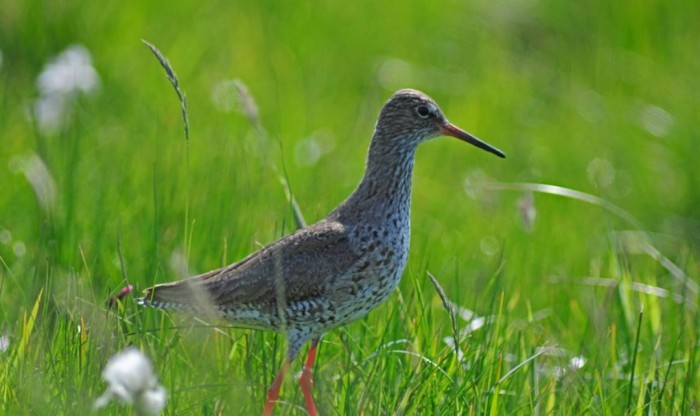Park Talk: a helping hand for nature
13th April 2023

By Doug McAdam, Cairngorms National Park Authority Board Member.
What do ptarmigan, golden plover, lapwings and capercaillie all have in common? They are all ground nesting birds along with many other species including dotterel, red grouse, oystercatchers, redshank, curlews, woodcock and black grouse.
They also share the fact that they can all be found in the Cairngorms National Park, with some species doing well, while others are struggling.
Farmland waders like oystercatchers, curlew and snipe are declining nationally but numbers are stable in the Park, particularly where land managers are working hard to conserve the species, like those partners involved in the East Cairngorms Moorland Partnership. From managing vegetation that better suits the birds, to creating wader scrapes – shallow pools of water with wide muddy edges which provide areas of insect-rich wet ground ideal for waders and their chicks. The estates also manage predators such as foxes and crows and, in some cases, stoats and weasels to help these birds when they are at their most vulnerable.
Ground nesting birds – whether they be ptarmigan and dotterel on the high tops, waders on our farmlands and moorlands or capercaillie in our forests – are extremely vulnerable to predation and disturbance, particularly in the spring and summer, so it is important we all play our part to reduce the pressures on these species. For example, if you own a dog please keep dogs on a short lead or close to heel in areas where there are ground-nesting birds; follow all local signage and advice from rangers; if spotted, avoid nests and young birds and if in doubt, always stay on the main paths.
Healthy habitats are also crucially important for our birds and other wildlife and a great deal of work is being carried out across the National Park to restore our landscapes as part of the ‘Heritage Horizons: Cairngorms 2030’ programme with woodland expansion and peatland restoration a key focus – promoting biodiversity and tackling the climate emergency at the same time.
River restoration projects are also imperative, from riparian planting to re-naturalising rivers that have become canalised over time. The National Park’s river catchments support internationally important populations of Atlantic salmon and freshwater pearl mussels as well as providing us with water, recreation opportunities and supporting local industries. Our waterways are under pressure but there are projects within the ‘Cairngorms 2030’ programme that aim to restore these areas to increase climate change resilience and reduce flood risk, ensuring that our rivers continue to deliver for the people and wildlife that depend upon them.
The nature and wildlife of the Cairngorms National Park is very special indeed – so it’s no wonder that a quarter of the rarest species in the UK make their home here – and you can find out more about it during the Cairngorms Nature Festival which runs from the 12–21 May. There are over 80 activities happening across the Park with something for everyone. You can choose from expert talks and walks, self-led or supervised activities, special accessible events as well as volunteering opportunities where you can really get stuck in and do your bit to conserve and enhance our special Park.